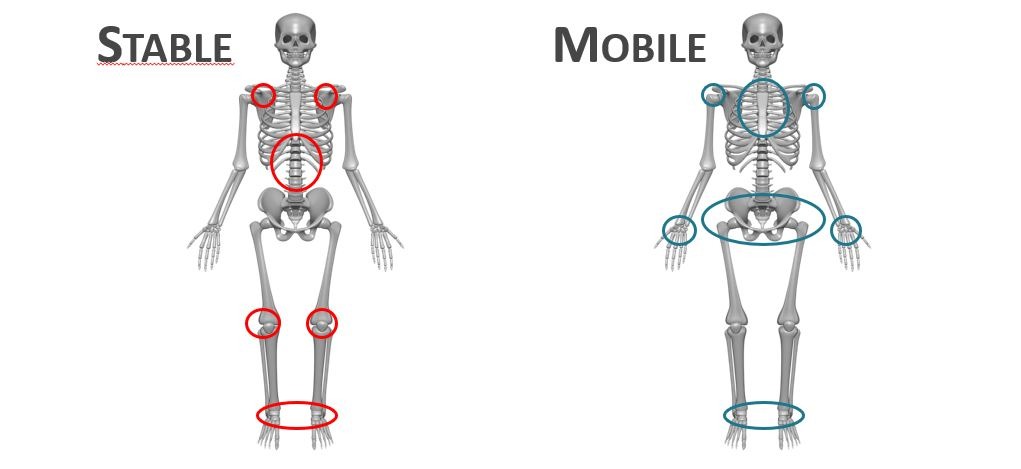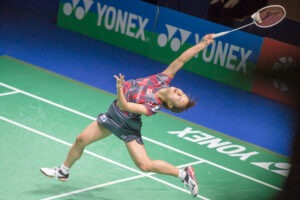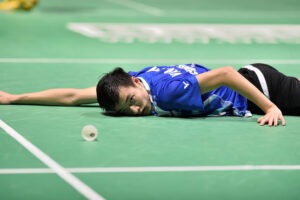Explosive jumps, fast changes of direction, deep lunges – the demands of badminton on your body are immense. No wonder that there is a huge risk of injuries for tendons , muscles and joints and you have to prepare your body for that kind of stress. Besides that, the complexity of the sport also leads to movements, where almost every joint of your body is involved., and a dysfunction in only one of them can decrease your performance dramtically.
In this article I want to focus on two very important factors, that are part of the fundament for every movement in sports and that play a huge roll when it comes to injurie prevention and performance: mobility and stability.
Mobility
Mobility is an important factor to prevent injuries, but also to increase performance. But not every joint should be as mobile as possible, in fact, there are some joints, that should be more stabile than mobile (more about that in the following to sections). But first of all we want to have a look at the joints, where you want and need a lot of mobility.
1) The ankle
Even though the ankle also has a stabile function (to avoid a sprain) it is mainly considerd as a mobile joint and the important part here ist the dorsiflexion. You can test it out by going into a knee stand and push your knee forward without the heel leaving the ground. The further you get with your knee, the more mobile you are in your ankle.
2) The hip
The lunge in badminton is a perfect example for the meaning of hip mobility. Only a mobile hip will allow you to go into a big lunge under pressure when you are low.
3) The thoracic spine
Not a „real joint“, like the hip or the ankle, but the spine also allows movement in many different directions. The upper part of the spine in height of the chest is called thoracic spine and this is also an area where you want to be mobile. On one hand you should be able to rotate your shoulders into both directions but you also need mobility to bend sideways or if you want to stretch out, for example to hit the shuttle really high.
4) The shoulder
Last but not least a very important joint for badminton that allows a lot of movement, as the joint socket is very small, compared to the head of the bone, so the joint is mainly controlled by muscles. Although the shoulder allows a lot of mobility, a lot of badminton players have problems to move with a full range of motion, what can have a huge impact on your technique.
The following video leads you through a short mobility routine that covers all four joints mentioned above:
Stability
Injuries can not only occur, when you miss out on mobility but also due to a lack of stability in certain joints. Now let’s have a look at the joints that are considerd as stabile:
1) Knee
The knee joint only allows (or should allow) movement in one direction, what is already a sign that it has a stabile function. Your leg axis should always be in line, especially when you land and jump the knee has to stay in place, otherwise massive injuries can occur. Knee stability can be perfectly trained by different balance exercises one leg or with minibands. In this video, you can find a few examples for exercises with those kind of tools.
2) Lumbar spine
Now we have a look at the lower part of the spine, the so called lumbar spine. Compared to the thoracic spine we need a lot of stability in that area and a strong core to develop power with our arms and legs but also protect the lower back. Classic exercises like different kinds of planks or crunches for example help you to work on that area.
3) Scapula/shoulderblade
As mentioned above the shoulder joint itself should be mobile but the shoulderblade next to it should be fixed and stabile when you move your arm, for example when you want to create power to hit a smash. Whenever you do exercises where you push or pull with you arms (push ups, pull ups, etc.) get your shoulderblade into a fixed position and keep it there during the movement.
Here you find two workouts with examples for stability and strength exercises. Both workouts have exercises for core strength, one focuses on the legs (knee stability) the other one on the upper body (shoulderblade):
The joint by joint approach
If we now have a look at the all the joints and their function you will realize, that mobile and stabile joints always come in alternated order, so ankle=mobile, knee=stable, hip=mobile, etc. That categorization, introduced by Michael Boyle, is not only a nice memory hook for the right function of each joint, but also can help to identify weaknesses and the reason for injuries and pain.

 The body is smart, and will find ways to cope with different challenges , even if he is not perfectly prepared for them. An example in badminton could be a shot far out in the round the head corner. If you want to hit there with your forehand, you usually should use a lot of mobility from your thoracic spine. If you are not mobile enough in that area, your body will create mobility from your lumbar spine, a „joint“ that should have a stabile function. In the long run, that will most likely cause some pain and injuries in the lower back, even though the actual problem lies somewhere else.
The body is smart, and will find ways to cope with different challenges , even if he is not perfectly prepared for them. An example in badminton could be a shot far out in the round the head corner. If you want to hit there with your forehand, you usually should use a lot of mobility from your thoracic spine. If you are not mobile enough in that area, your body will create mobility from your lumbar spine, a „joint“ that should have a stabile function. In the long run, that will most likely cause some pain and injuries in the lower back, even though the actual problem lies somewhere else.
That can not only occur in neighboring joints, but a problem and the actual reason for it can even be further apart. So try to specifically work on all joints with specific training for mobility and stability, to be able to bring every thing to the court, without injuries.
If you want to learn more about the joint by joint approach and the meaning of stability and mobility I can just recommend to have a look at this article, that goes more in depth on that topic.




Eine Antwort